Star Trek: Picard Review Of The Finale And Full Season
Star Trek: Picard is so badly written that in the end, it sides with a bunch of robot Nazis.
This article is more than 2 years old
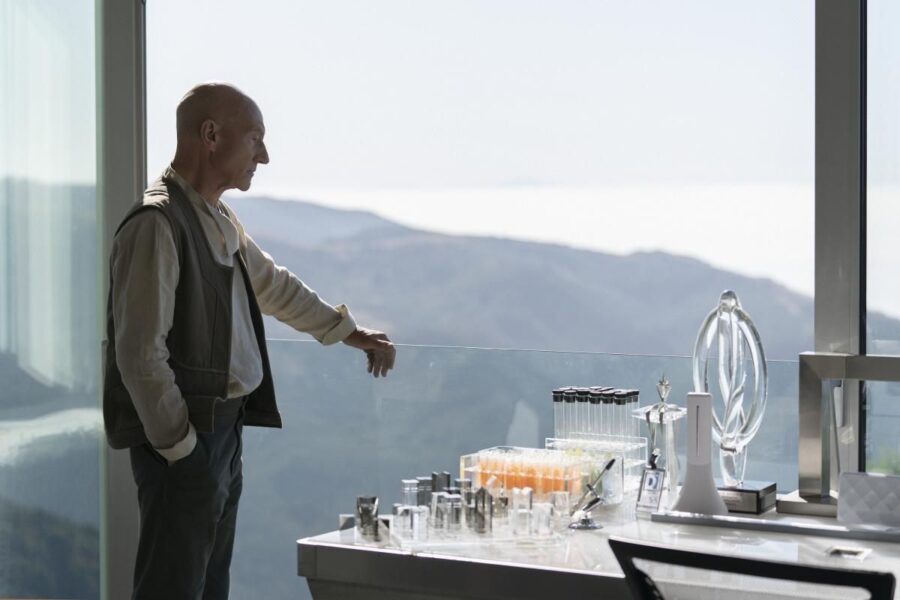
Star Trek: Picard began with a beautifully written scene in which Commander Data and Admiral Picard played poker and discussed each other’s tells. The writing on the show would never get to that level again.
In the final episode of season one Picard accuses Soji of having a failure of imagination. That accusation could and should also be leveled against the writers of Star Trek: Picard. In constructing the first season they too suffered from a failure of imagination. Coupled with a failure to pay attention to details, their mistakes proved fatal.
What started out promising turned into a poorly produced slog, with nearly every episode of the show weighed down by trivialities and side trips that made no sense. When the plot did move forward, it was pushed by contrivances and riddled with plot holes, like the one where Elnor magically appeared on a Borg ship that no one was supposed to be able to beam into. How the hell did he get on that ship? Even in hindsight I can’t come up with a way it could have happened and apparently neither could the show’s writers, so they didn’t bother to try. Elnor appeared because they’d decided that’s where he needed to be.
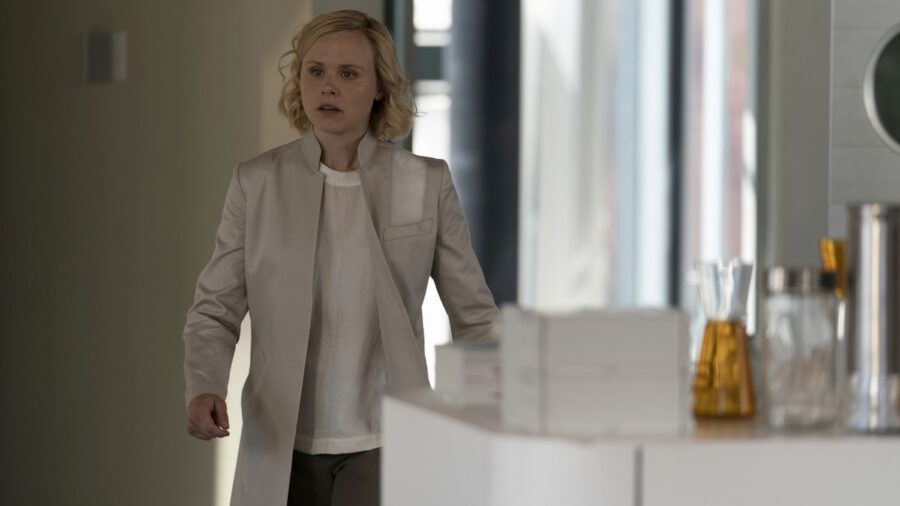
In theory Star Trek: Picard is the most expensive piece of Star Trek ever produced. None of that budgetary excess showed up on screen. The series cut corners at every turn, reusing sets even when it made no sense and avoiding special effects whenever possible.
The hero ship of the series, La Sirena, is a big empty warehouse in which they couldn’t bother to build Picard a proper office to sit in. Instead they saved money by pretending he lives in a holodeck and reused the sets they’d already built of his Chateau from the first episode. In doing so they missed an opportunity to give us any sense of place.
On screen, the most expensive Star Trek series ever produced looked like the cheapest Star Trek series ever produced. Or maybe they had the money and lacked the imagination to use it. Given the show’s copycast story as evidence, that’s possible too.
As for the overarching plot of the season, that too was a failure of imagination. The idea of Picard’s androids summoning an ancient life-destroying force was blatantly stolen from the video game Mass Effect. If you doubt the level of plagiarism at play here, Google “Star Trek: Picard and Mass Effect”. You’ll find YouTube littered with videos in which disappointed fans lay out shot by shot evidence of the show’s obvious and inescapable theft.
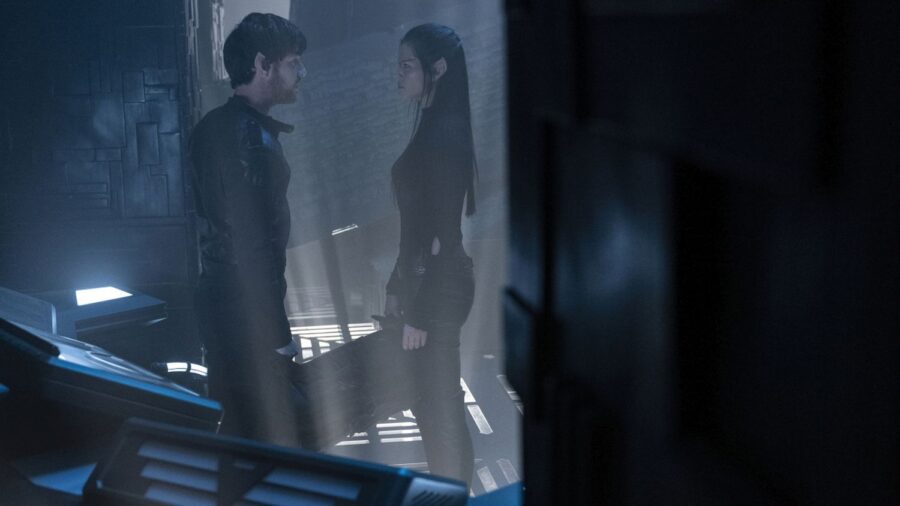
At no point did the writers of Star Trek: Picard ever get it right for more than a scene or two. When there were gaps in the story they wanted to tell, they’d either invent some magical device (like the one Rios uses to fix his ship in the show’s final episode) or they’d jump to whatever they wanted to happen without explanation and hope the viewers could come up with an excuse for why things played out the way they did.
Warning: Spoilers For Picard’s Final Episode Follow From This Point In The Review! Read No Further If You Haven’t Watched The Finale Yet!
The culmination of the show’s writing failures came in the final episode when Narek shows up with a bag of hand grenades and tells the crew of the La Sirena to come with him. The crew of the La Sirena has spent the entire season thinking of Narek as a villain, one of the guys they can’t trust and who they definitely should not work with. But they decide to do everything he says anyway. He presents no reason for them to trust him, but the plot needs them to be on his side and so they are. Maybe we’d all feel less insulted had Narek taken a moment to break the fourth wall and wink at the camera. At least then we’d have some admission that they know we’re not this stupid.
Perhaps the season’s worst sin was its total inability to make us feel sympathetic towards the Synths. The entire point of Star Trek: Picard season 1, as it turns out, is a mission to save a group of synthetics from annihilation at the hands of the Romulans. Except by the end of the season we’ve learned that the Synths are actually genocidal robot Nazis who want to wipe out all life in the universe and the Romulans are the guys who are trying to stop them from killing literally everyone.
Why did we want to save the Synths again?
Sure, at the last minute Soji shuts off the machine that was going to summon death-bringing tentacles. But what about the other Synths? They were totally on board with killing everyone and the show never gives us any evidence that they’ve actually changed their mind.
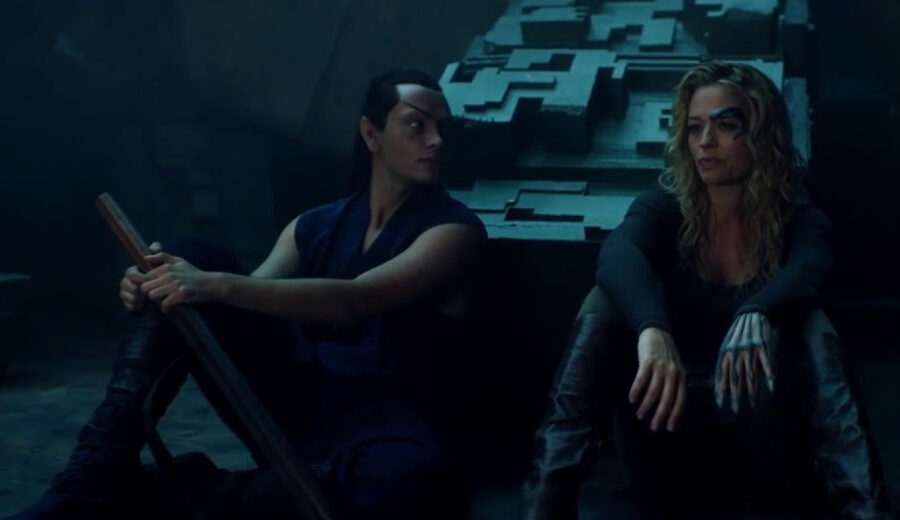
Star Trek: Picard is so badly written that in the end, it sides with a bunch of robot Nazis and asks us to cheer when Starfleet won’t let the Romulans stop them from committing genocide.
It’s like none of Star Trek: Picard’s writers ever stopped to read their own script.
Picard’s first season ends in much the way it began: With Jean-Luc sitting down for a conversation with Commander Data. In the least Jean-Luc thing ever, he confesses his love for his former third officer and Data, still being Data, admits that knowing Picard loves him forms a small, but significant piece of data in his head. Then Admiral Jean-Luc Picard walks out of the room where we’ve just discovered Commander Data is still alive… and murders him.
Another opportunity wasted.
Sure Data asked for release, but then I would too if I was stuck as a disembodied consciousness inside a computer for a decade or two. In all this time Bruce Maddox has been churning out androids on his assembly line no one ever thought to give Data a body? Maybe he’d want to live then, but Picard never asks. He simply says a few nice words and murders him.
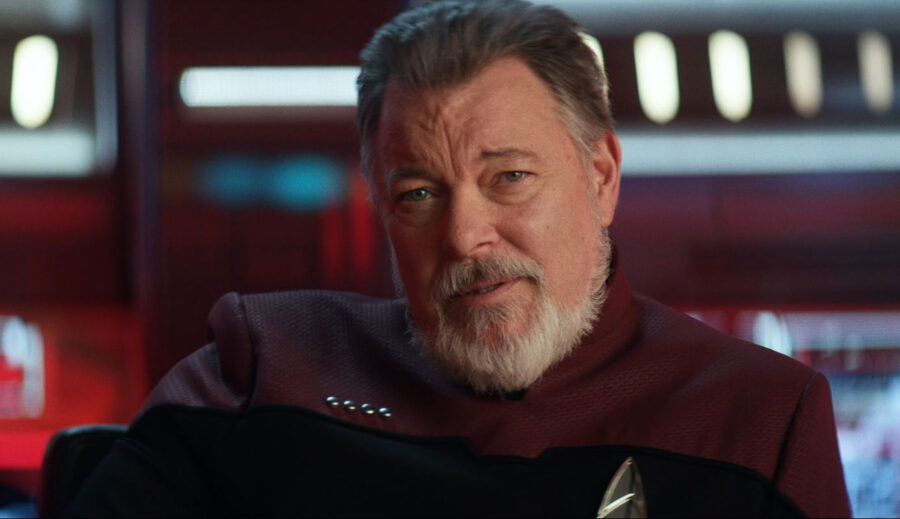
When Commander Riker eventually shows up and we get a brief shot of him on the bridge of an actual Starfleet starship, all I could do was sit and wish that this was the show I was watching. Instead, in Star Trek: Picard’s final episode we get to watch Jean-Luc Picard not only kill one of the most beloved characters in Star Trek, but also kill the only thing about his show which really worked. I can’t imagine a more appropriate ending for Star Trek: Picard’s disappointing first season.
Note to CBS: Please don’t make another one. If they do, next time I’m siding with the Romulans.

Star Trek: Picard Season 1 Overall Review Score
What follows is my previous review of Star Trek: Picard Episode 4…
Star Trek: Picard Episode 4 Review
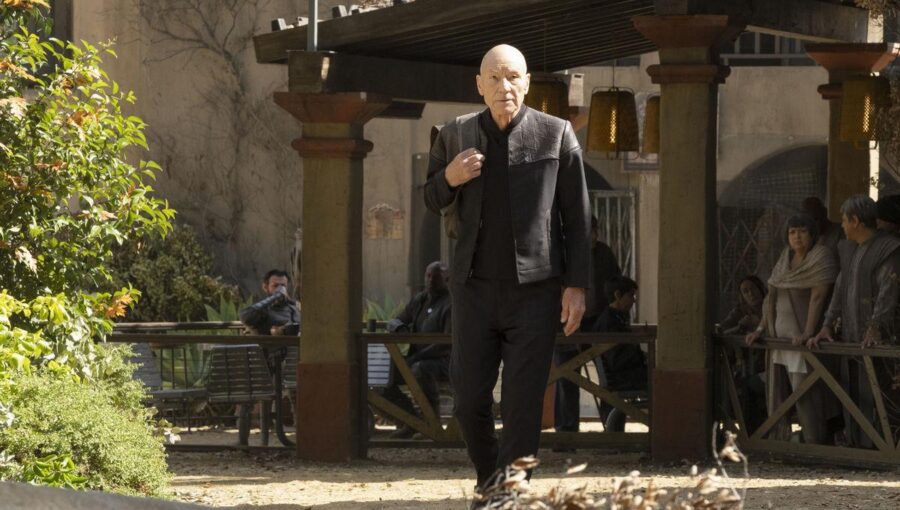
Episode 4 of Star Trek: Picard will probably be remembered as the one where Seven of Nine is introduced or where they end up fighting an old Original Series style Romulan Warbird. As you watch it though, you’ll see none of those things until the very end. Instead, this episode is the embodiment of Jean-Luc’s regret and to help us understand the show’s writers wrap that regret in the body of a little kid.
“Four episodes in and you’re probably starting to notice a pattern. Only every other episode of Star Trek: Picard seems to actually move the plot along. “
-Josh Tyler, GIANT FREAKIN ROBOT Reviews Star Trek: Picard Episode 4
Titled “Absolute Candor”, episode 4 of Star Trek: Picard begins with a flashback in which we see Picard during the days of the Romulan evacuation. Millions of Romulans have already been evacuated by Picard’s fleet with hundreds of millions more to go. A quarter of a million of these refugees have been settled on an idyllic planet called Vashti, which looks like the kind of place you might find elves hanging out in Lord of the Rings.
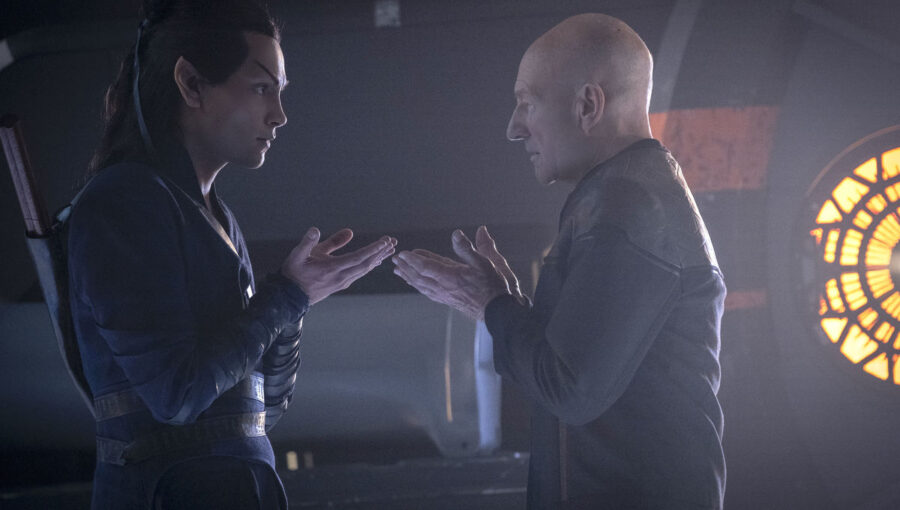
Picard is reading to a Romulan boy to whom he’s become attached (even though he still doesn’t really like kids) when the call comes in from the Federation to abandon the whole thing and come back home. Jean-Luc never sees that boy again.
Fourteen years later and Jean-Luc instructs his newly hired ship to take a detour, back to Vashti where he left that boy in the care of a group of kindly Romulan super-assassins. His excuse is a desire to find some hired muscle, but his reality is that he wants to set right the things he did wrong.
Most of this Star Trek: Picard episode follows Jean-Luc as he revisits the people he left behind. No one is happy to see him. Instead of being grateful that he saved them, they’re bitter that he was unable to save everyone else.
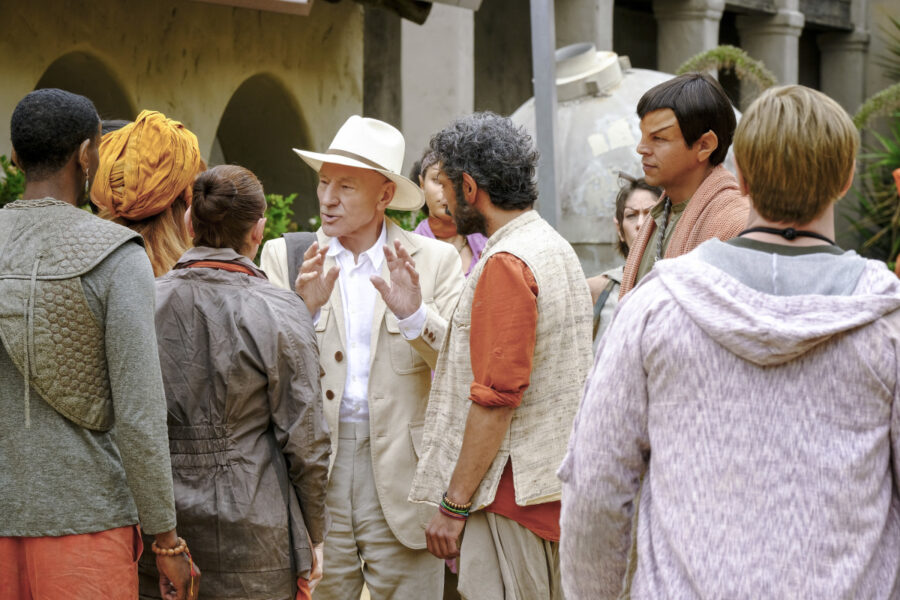
For his part Jean-Luc is heartbroken. He’s torn over the state of abject poverty he finds them in. Except it doesn’t look like abject poverty. The setting presented by the show still looks like a beautiful elven village where Romulans sit outside in beautiful cafes bathed in perfect sunlight. I guess all that time hanging out in a French chateau has raised Picard’s standard of living requirements to impossible levels.
In the background there’s still that mystery happening at the Romulan Borg cube. We don’t really learn anything new, except that super cute Romulan agent’s sister is getting sick of waiting for him to get something done. Also, he has a lot of fun making out with Data’s daughter.
“Absolute Candor” is a pleasant middle episode which serves to develop the world of Picard and deepen the feeling of the universe. Is it essential? Not really. Four episodes in and you’re probably starting to notice a pattern. Only every other episode of Star Trek: Picard seems to actually move the plot along.
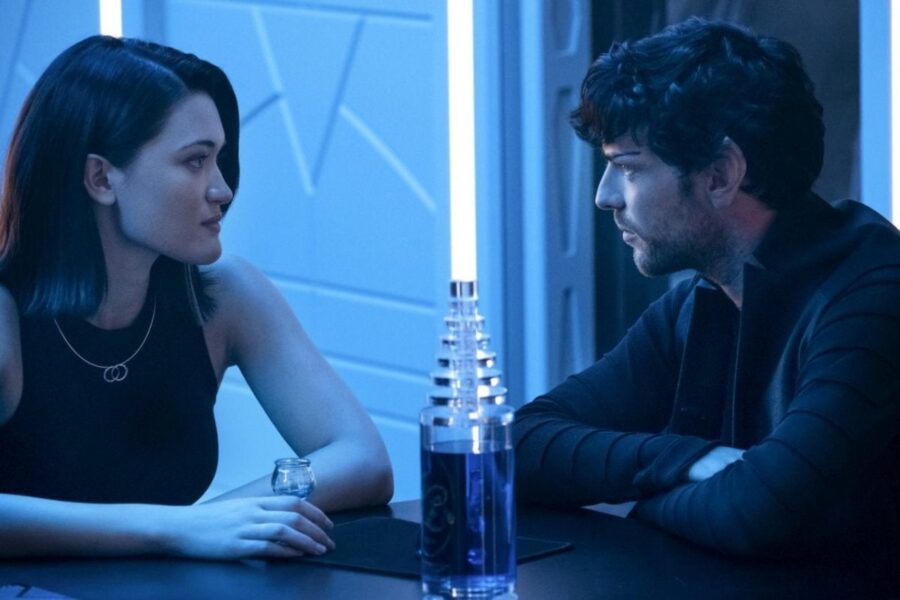
The first episode set up the plot, the second episode dithered around, the third episode actually launched Jean-Luc into space, and the fourth episode took a detour to pick up more crew members. Presumably by next week we’ll be on track and moving forward again.
In the meantime, at least the fourth episode took us to a different world. “Absolute Candor” deserves a lot of credit for excellent production design put to work on creating a beautiful yet alien planet. They’ve done something different with the look than we’ve ever seen on Star Trek before, even though it does look a little Lord of the Rings.
Patrick Stewart continues his fine acting and Star Trek: Picard gave us a few tantalizing moments to tease how interesting his new crew might be. We don’t get to spend much time with them, but the show leaves us wanting more. Even at its lowest moments, Star Trek: Picard always leaves its audience wanting more. That’s high praise for any weekly television show.
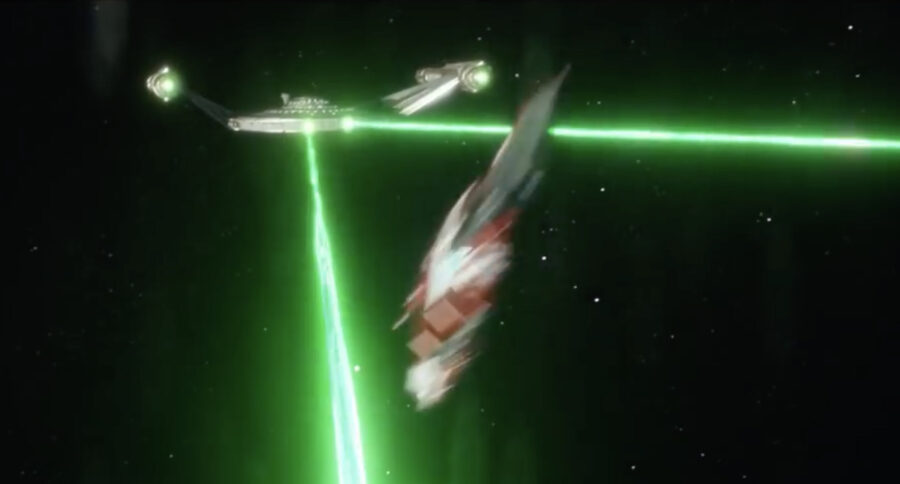
Why is it that we still don’t know the name of Picard’s new ship? Someone over at CBS should get on that.

Star Trek: Picard Episode 4 Review Score
What follows is my previous review of Star Trek: Picard Episode 3…
Star Trek: Picard Episode 3 Review
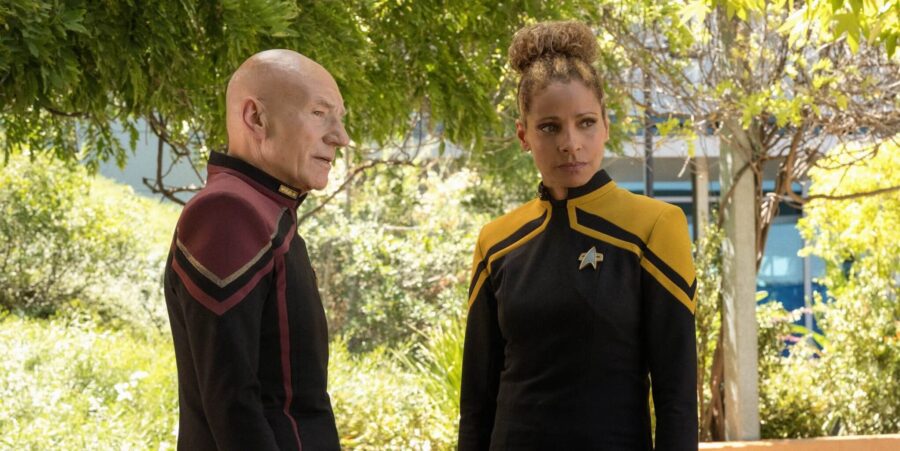
Star Trek: Picard episode 3 begins in the past, where we see Picard at the moment he leaves Starfleet. To make this scene work, Patrick Stewart is digitally de-aged in one of the most flawless special effects shots of its kind I’ve ever seen. You can’t tell there’s any digital wizardry at all going on here. If you can ignore Stewart’s aged voice it’s easy to imagine the entire exchange was filmed twenty years ago.
“Three episodes in and Star Trek: Picard has established itself as a show that is every bit as restrained and polished as Captain Jean-Luc Picard himself.”
Josh Tyler, GIANT FREAKIN ROBOT’s Review Of Star Trek: Picard Episode 3
It’s that kind of attention to detail which continues to be Star Trek: Picard’s strength. The writing is always narratively sound, the performances are always spot on, the special effects are always delivered in exactly the right amounts; never too little or too much. Three episodes in and Star Trek: Picard has established itself as a show that is every bit as restrained and polished as Captain Jean-Luc Picard himself. It’s the perfect tone for this show about this particular man.
Star Trek fans with a love for the franchise beyond a singular nostalgic hero worship of Jean-Luc Picard may be less happy with the direction things are going. This third episode, titled “The End is the Beginning” trods into areas some Trekkies might think this franchise should never go.

We’re introduced to Jean-Luc Picard’s former assistant named Raffi (Michelle Hurd), who is now a drug addict vaping paranoia-inducing narcotics. She hangs out in an impoverished “hovel” located at the iconic Trek shooting location of Vasquez Rocks. It seems in the future, Vasquez Rocks has morphed from nature park into a one woman trailer park.
Everything about this scene, from a Star Trek ideology standpoint, is totally wrong. The point of Star Trek, literally the entire reason it was created, is to depict a bright shining future in which humanity has solved all of its internal problems and can focus entirely on the galaxy without. That means there’s not supposed to be any poverty or drug addiction, especially on Earth.
Here though, we’re confronted by both of those things, hanging out right in the middle of what’s supposed to be a nature preserve in California. In Star Trek: Picard’s revised future not only are drug addicts and poverty still a thing, but apparently no one cares about preserving nature either. They just throw their beer cans out on their iconic lawn.
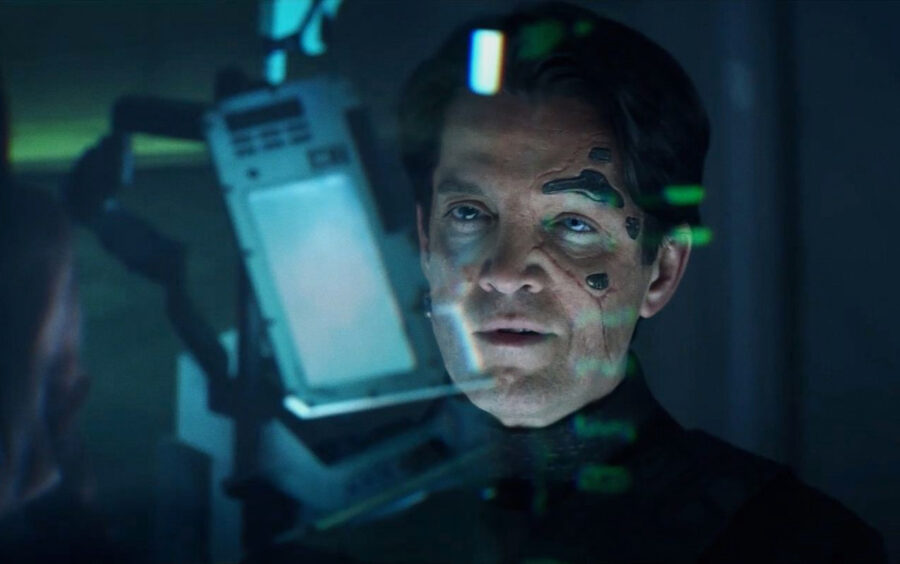
Maybe Star Trek: Picard shouldn’t have gone there. Narratively Raffi’s introduction makes sense though, as the series seems to be setting her up on a redemption arc. And if at times the series misses some of the nuances of what Star Trek is supposed to be, it captures a lot of the right feelings. When Jean-Luc stands in his vineyard and looks up at the stars, ruminating on the realization that up there is where he belongs, you can feel the spirit of adventure blowing through the few remaining grey wisps of the former Captain’s hair.
Overall Star Trek: Picard episode three is a nice step forward from the holding pattern episode two was stuck in. It spends a lot more time on the Borg cube and we’re at last introduced to modern day former Borg Hugh (Jonathan Del Arco). We’ve finally met our crew and we see the ship Jean-Luc Picard will end up flying around in. It’s not as cool as the Enterprise, but at least by the end of the episode Picard tells them to “engage” and they turn on the Warp drive.
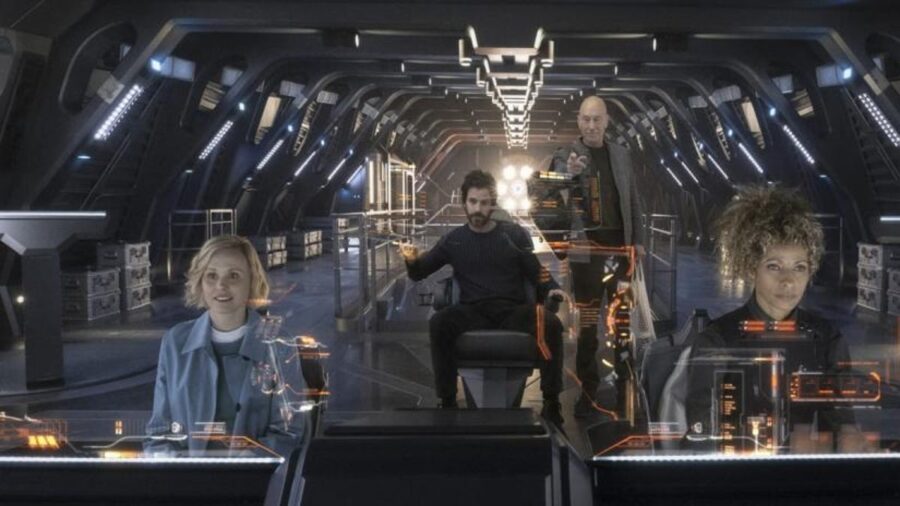
It’s taken three episodes but now Star Trek: Picard is really off and running. The preview for episode four promises to take us to new worlds, and I for one can’t wait to get there.

Star Trek Picard Episode 3 Score
What follows is my previous, less positive review of Star Trek: Picard Episode 2…
Star Trek: Picard Episode 2 Review
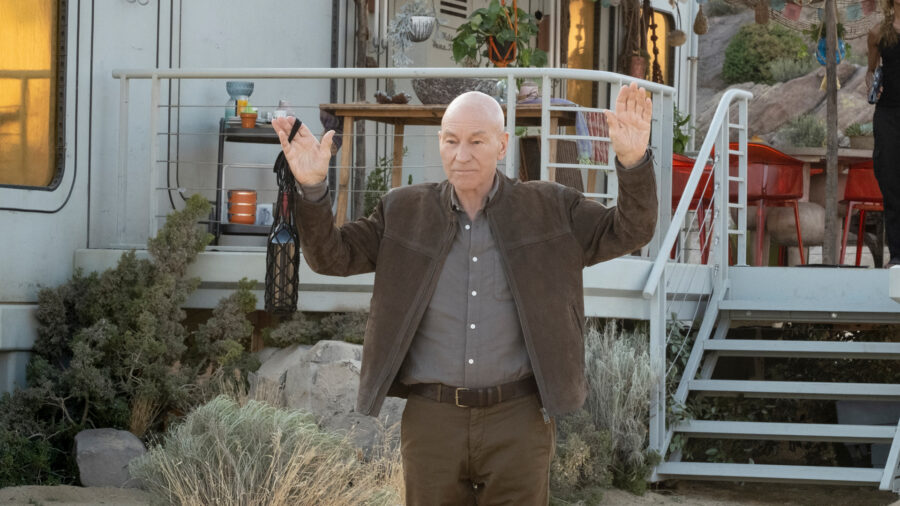
If you’re looking for an episode of Star Trek: Picard to skip, episode 2 is the one. The exposition which began in episode one lingers on through the entirety of this episode, serving no real purpose except to reiterate things we already know and give us long, lingering shots of Jean-Luc Picard standing impatiently in front of the fire at his vineyard.
This is a review of Star Trek: Picard’s second episode, titled “Maps and Legends”. For a review of episode 1, go here.
Modern series like this one don’t have dozens of episodes to work their way into adventure, Picard only has ten before its done. That makes wasting the audience’s time like this particularly egregious. With only eight more episodes to go we should be out in space now, having adventures. In episode 2 when it comes to adventure, there is none.
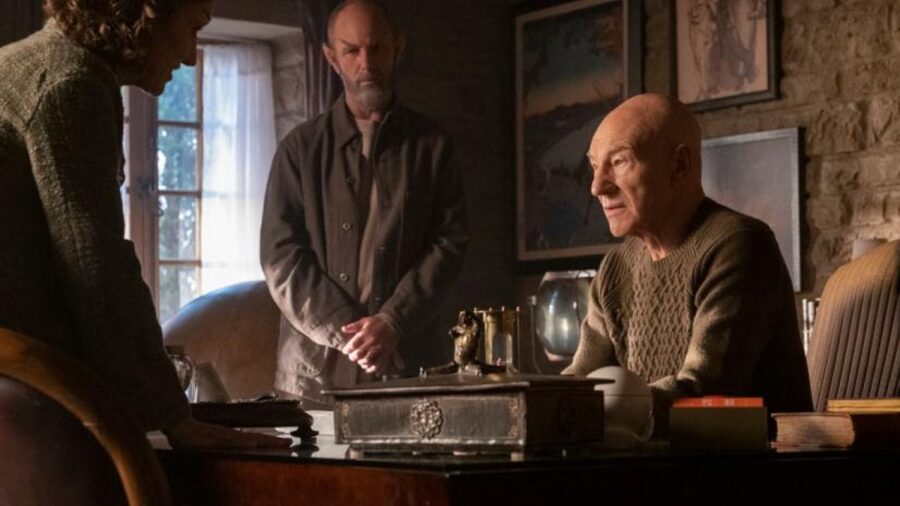
Worse than that, Star Trek: Picard episode 2 offers no new information. It does nothing to move the plot forward. One of the characters introduced in episode 1 gets a little more development and we do learn something obvious about Picard, but none of it is enough to deserve an hour of your time.
Like the first episode, Star Trek: Picard episode 2 is still well acted and directed. Those shots of the vineyard still look really good. But we saw all that in episode one. Apparently the show was so in love with those San Francisco shots, they thought we should see them again.
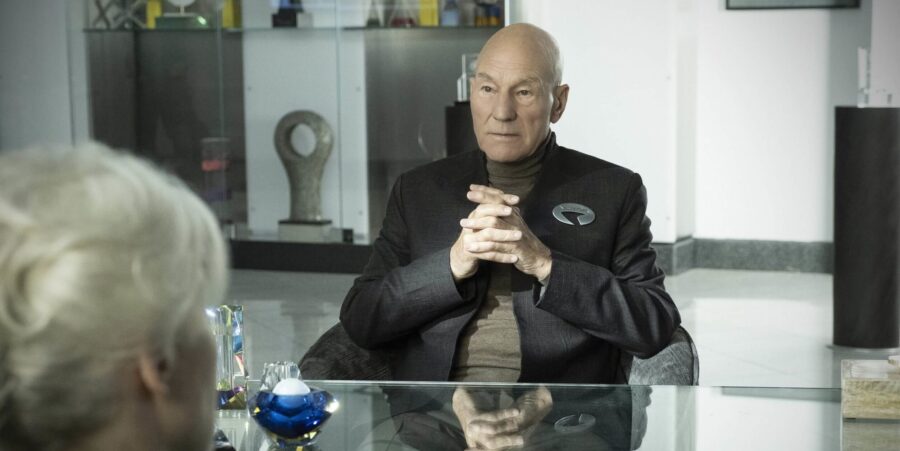
The highlight of Star Trek: Picard’s second episode is getting a closer look at the new Starfleet uniforms. They look really good. I’m not sure that’s a good excuse for watching an entire hour though.
After episode one I was excited about the direction Star Trek: Picard is going in. I’m still excited about where it could go, only now I find myself increasingly concerned that it may never actually get around to going there. Two hours in to this exposition and we still haven’t gotten to the plot. Jean-Luc Picard has had a mission for over ninety minutes of run time, when is he actually going to go on it? It had better be soon.

Star Trek Picard Episode 2 Review Score
What follows is my much more positive Star Trek: Picard review of episode one.
Star Trek: Picard Episode 1 Review
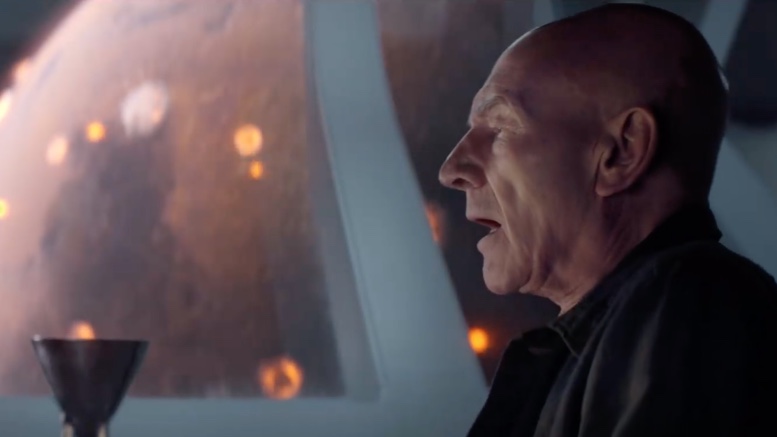
Star Trek: Picard begins where the Star Trek: The Next Generation television show left off: with Picard (Patrick Stewart) playing poker aboard the Enterprise D. Across from him sits Data (Brent Spiner). Picard, now elderly and out of uniform, searches Data’s carefully controlled android face for a tell. To Data’s astonishment, he finds one. The two of them drink tea and talk and in the end Picard confesses he’s stalling for time because he doesn’t want their game to end. Neither do we.
This is a review of Star Trek: Picard’s first episode, titled “Remembrance”.
Star Trek: Picard’s brief moments between Jean-Luc and Data are the best parts of the new series’ first episode. Yet their poker game must end, because we as an audience know that the Galaxy class Enterprise was destroyed in the movie Star Trek: Generations and Data, sadly, was killed in the crew’s last cinematic outing Star Trek: Nemesis.
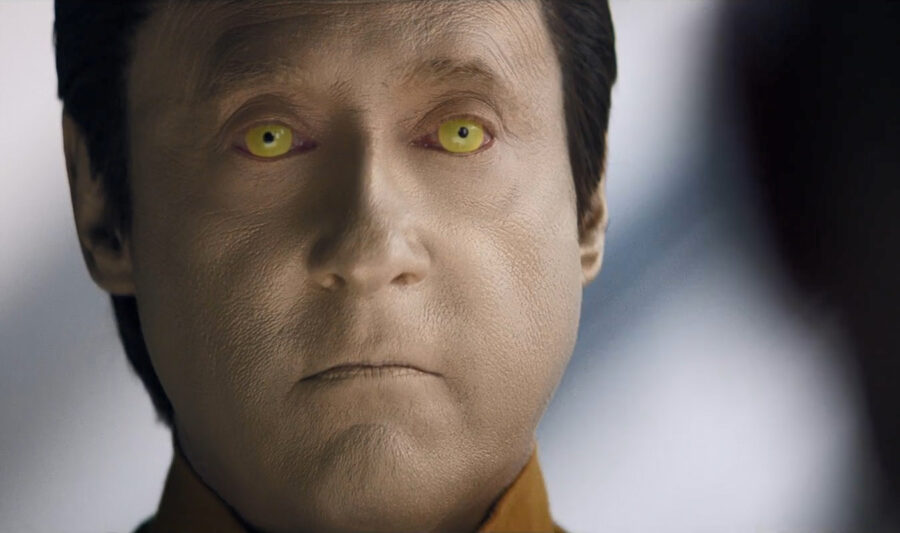
Soon Picard awakens from those dreams of the past to find himself in the real world he’s been living in since he resigned from Starfleet. Retired and relaxed, the one time Captain spends his days at Chateau Picard, his family’s ancestral vineyard. The vineyard and the Captain, are in the care of two kindly Romulan caretakers.
Life goes on until a girl in trouble shows up at the Chateau and begs Jean-Luc for help. He responds, in part because he is who he is, and in part because he thinks he knows her. The connection between them is perfectly foreshadowed by Picard’s dreams, and while you’ll have it figured out long before Picard does, it won’t hurt your enjoyment of its discovery.
What’s best about Star Trek: Picard is the way it builds on the past of Picard’s life without getting lost in it. Everything that happens in Star Trek: Picard is a direct result of the life we’ve seen him live before on our screens. Star Trek: Picard isn’t intentionally focused on paying homage to The Next Generation it’s simply beginning the next chapter, a chapter which begins twenty years after we last saw Jean-Luc and his crew on screen.
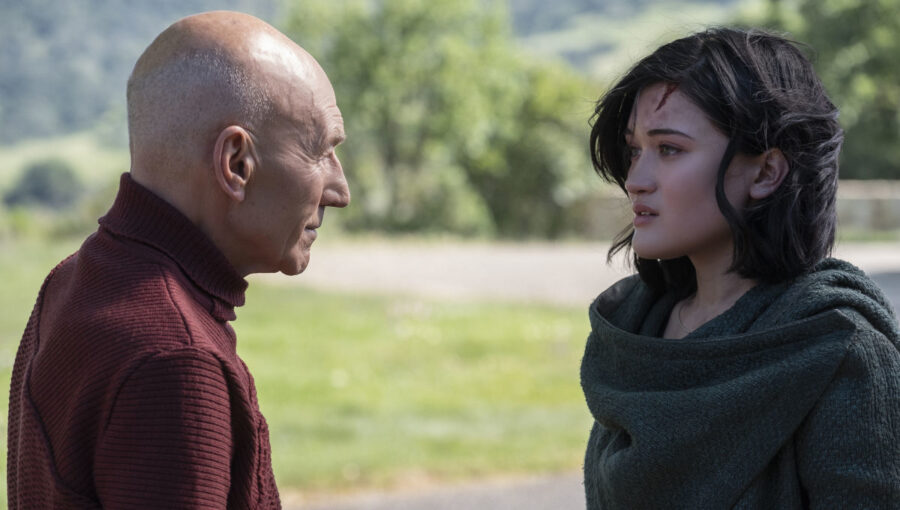
Things are different now, especially actor Patrick Stewart, who as always plays Jean-Luc Picard. He’s become elderly and frail. There’s no getting around that, so Star Trek: Picard doesn’t try to. It incorporates it, makes his age part of the story, part of the legend they’re trying to build around the show’s central mystery.
In the background lurks Picard’s past. It haunts him, all of it. He’s made mistakes and in the time since we left him, so has the organization he once loved: Starfleet. Those concerned that the show might use those mistakes to become preachy can rest easy. Those errors are a critical component of Picard’s present-day character, but so far haven’t been used to lecture the audience. In an era where television, even Star Trek television like Star Trek: Discovery, is often used to tell the audience what to think, so far Star Trek: Picard has held to the more classic Trek formula of asking only that they think.
If there’s a problem with Star Trek: Picard it’s that sometimes the first episode seems a little rushed. How the mysterious girl shows up on Jean-Luc Picard’s doorstep feels forced and the way in which things unfold feels more like an obvious setup for a show than a genuine single-episode story. But it is a first episode and setting things up is what this is supposed to do. Check off that box.

Against all odds Star Trek: Picard has started strong as both a heartfelt tribute to something we once loved, and an artful exploration of something completely new. It’s something few franchises have ever really pulled off, without resorting to an uncomfortable reboot or an unsatisfying prequel. Star Trek: Picard is neither of those things. Instead it does something Star Trek hasn’t done a long time: boldly going into the future and facing the consequences of wherever that may take them.
In doing so Star Trek: Picard successfully walks a fine line. While it makes a few mistakes along the way, first episodes are never easy. Star Trek: Picard is off to a stronger start than most shows, if it continues on course we’re in for something special.













